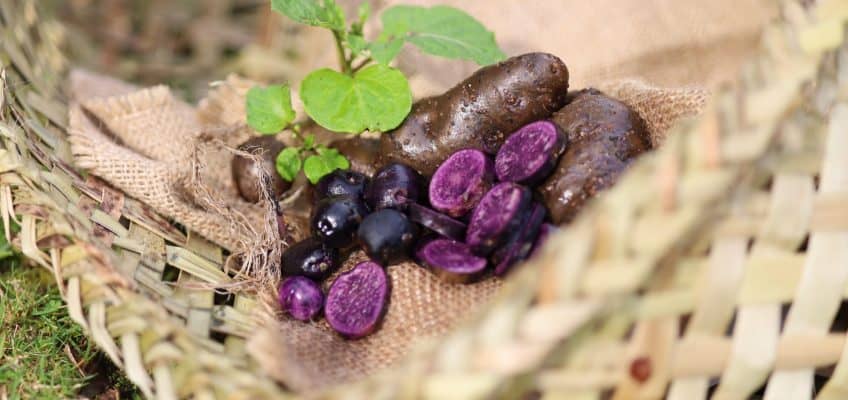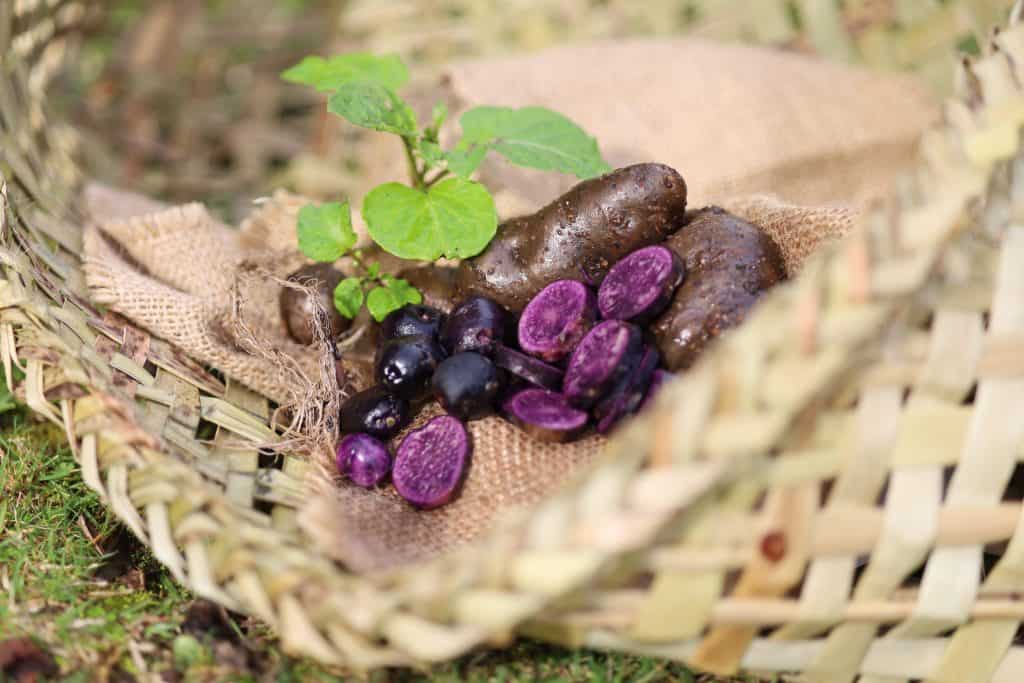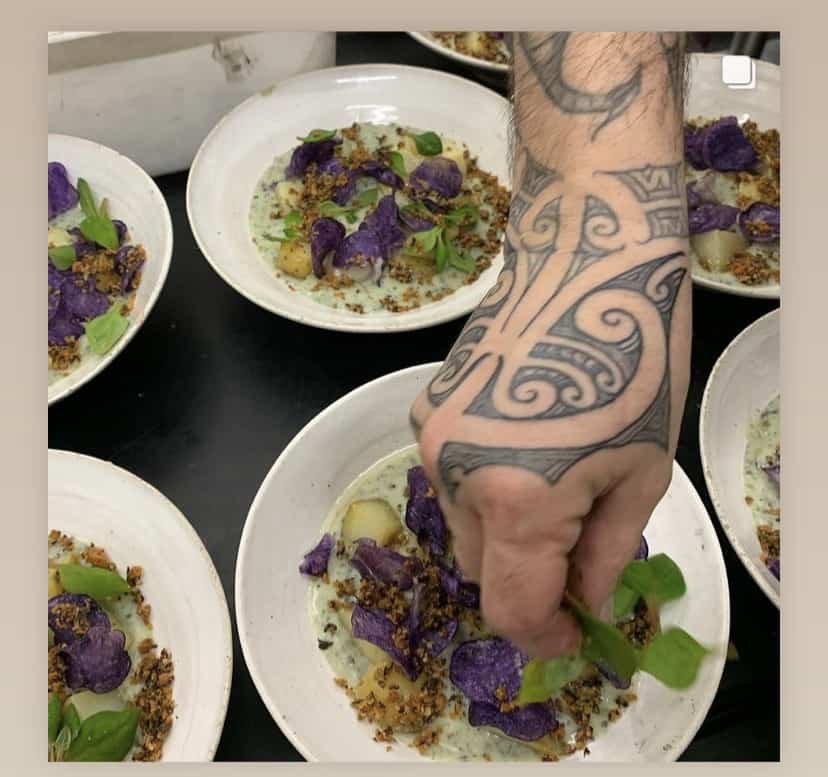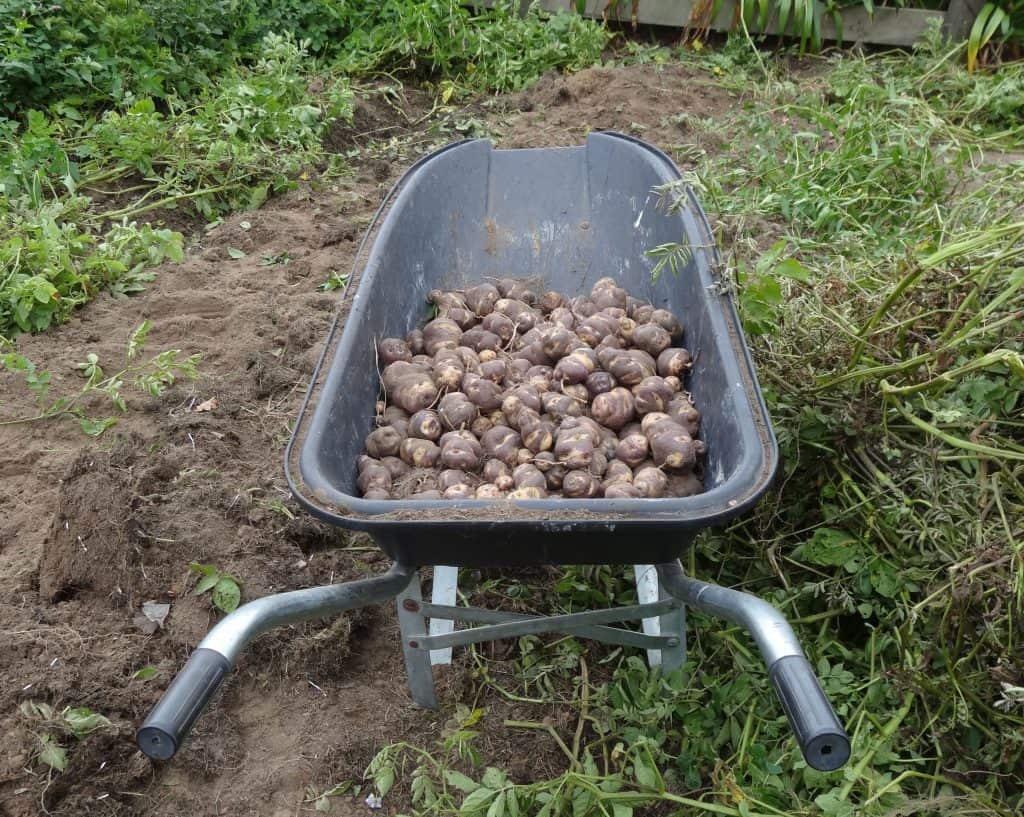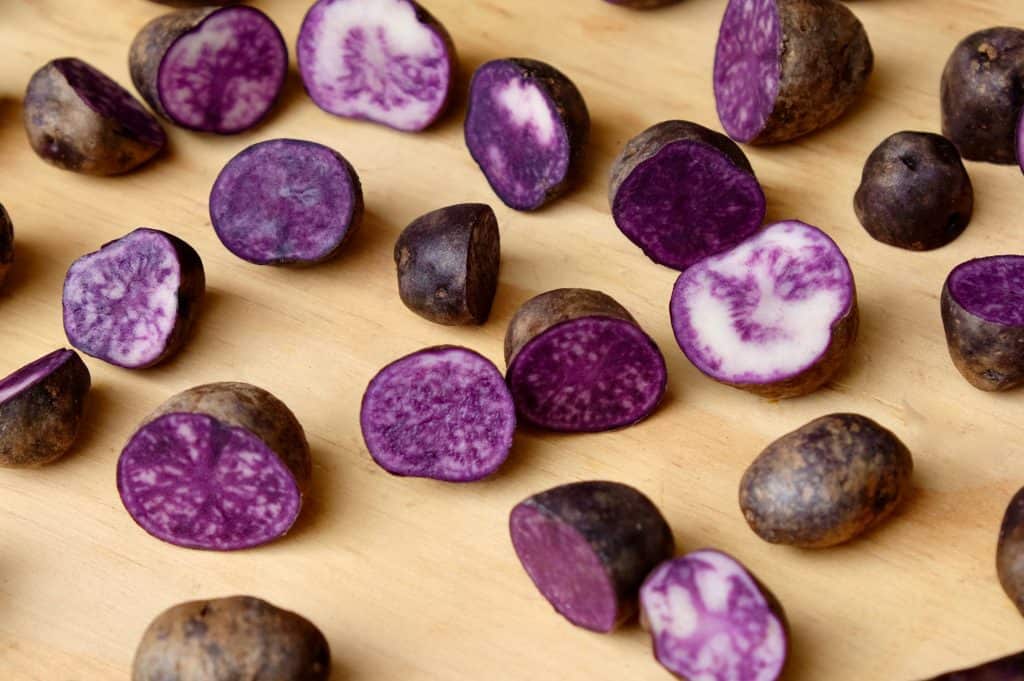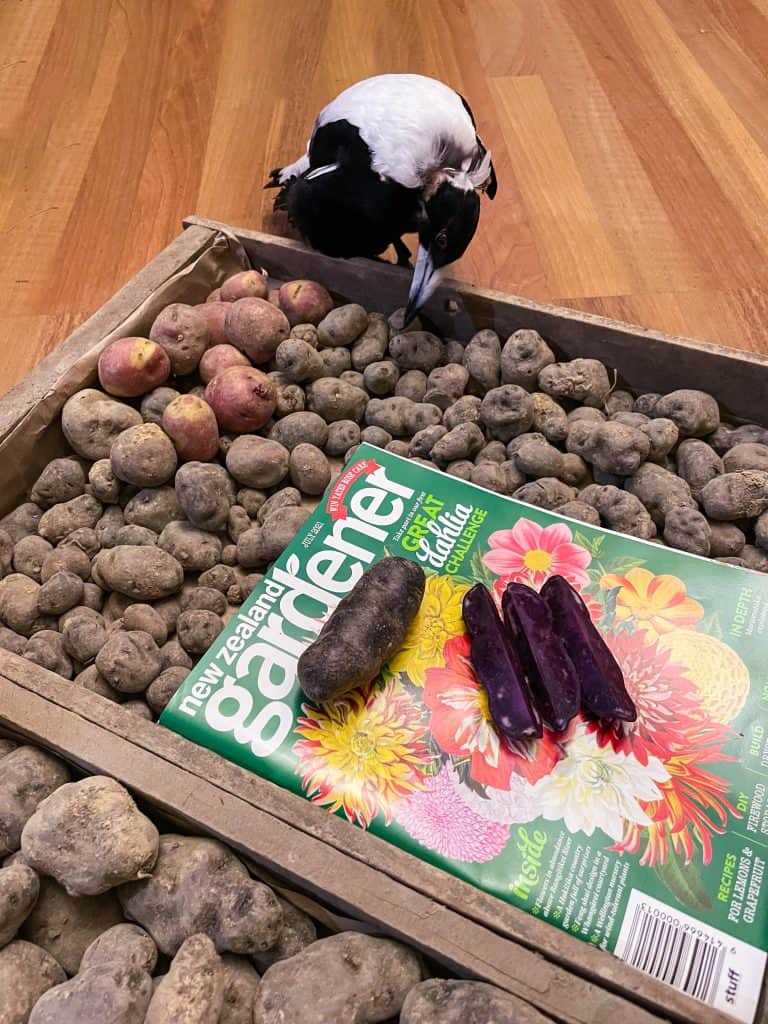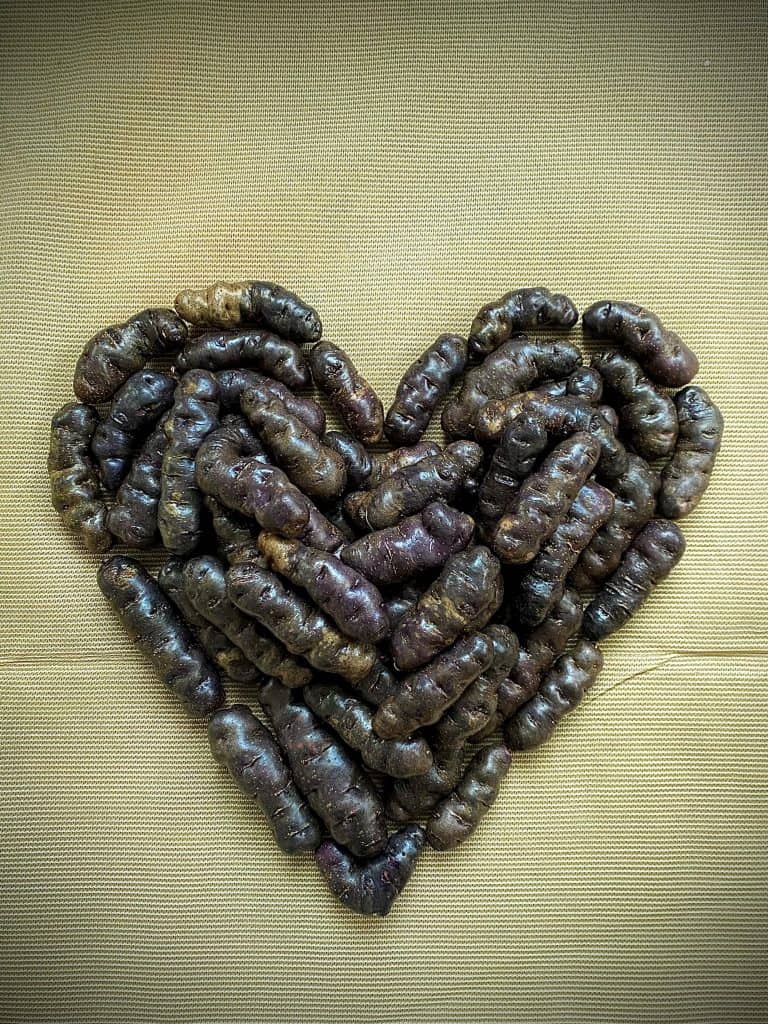NGĀ KAITIAKI O NGĀ TAEWA – GUARDIANS OF THE POTATOES
By Gemma Carroll.
This winter Potatoes New Zealand teamed up with Eat New Zealand for the Feast Matariki campaign by sponsoring The Great Taewa Hunt. We envisaged connecting with local communities and smaller growers who are kaitiaki for the taonga that is Māori potatoes.
Taewa is the name for the potato tuber varieties traditionally cultivated by Māori. Once they’ve been prepared for eating, potatoes are then referred to as ngā rīwai.
The Great Taewa Hunt was a competition calling for images and story sharing.
We wanted to hear where they are growing, who is growing them, and what varieties currently exist?
This competition was an opportunity for all kaitiaki kai (guardians of food) including keen photographers, eaters, growers, iwi, farmer markets and chefs to share stories of taewa.
Here’s some of the aroha and spudlove we received.
Carolyn Chadwick
“These Tutaekuri are growing just out of Matata near Whakatane. Louise is a nurse, and she was given them 10 years ago by a patient from Kawerau”.
Marion Fumarola
“The revival of indigenous and locally adapted seeds is one of the keys to secure food crop diversity.
We need to maintain traditional crops through continued agroecological cultivation coupled with traditional knowledge and keep the seeds in our hands to be passed on to the next generation. Taewa are traditional potato varieties introduced to New Zealand in the late 18th century and became a staple Māori food crop.
I am in love of these treasures and so grateful that our community have protected these seeds and kept them where they belong: in our gardens and on our tables”.
Greg Wiechern
“From a small bucket of shriveled, root bound, taewa, to a barrow load of beautiful kai”.
Slick Ultra
“I sourced tubers at least 15 years ago from an abandoned garden, the plants were struggling in the overgrowth, at the time they resembled small tutaekuri (love that name). I have been selectively and organically growing these each year since and will continue to do so as they are a family favourite, especially as a purple mash, which we simply wash and boil without peeling. Also, my ‘purple’ potato salad always invites discussion. I store them unwashed to maximize their shelf-life. The purple variety are rich in antioxidants and have health benefits for my family, as well as being highly nutritious. One of my pet Magpies ‘Marvin’ also likes to eat the small taewa”.
Phil Varley
“Growing taewa is all about love and connection for us; to the land, the seasons, our environment, to our community that we are privileged to share these nourishing foods, and to our past whānau that gifted these taonga to us when we first came to Aotearoa. Let’s spread the love & grow together!”
Mark Ibbotson
“I live with my wife at the foot of the Radiant Range on the West Coast at the top of the South Island. I have been growing taewa for several years after being given the seed from a friend who moved here from Birdlings Flat on the East Coast. We have a wet but mild climate and root crops seem to do quite well here. I grow organically with sheep and chicken manure. Weka fences are a must in our area. These taewa and yams were grown dug and photographed on the old Little Wanganui riverbed, top of the West Coast, South Island.
Freshly dug taewa grown and consumed locally, in our paradise that is the Karamea Bight”.
Craig Martin
“Know the whakapapa of your food”.
It’s clear there’s a resounding love and protection of ngā taewa and that food sovereignty is treasured in Aotearoa. Potatoes New Zealand is very grateful to have had the opportunity to read these stories, see the images, make these connections and we hope to encourage further community support for growers of these unique varieties.
Our understanding is that the following named taewa have been or continue to grow in Aotearoa.
Rāupī: round with yellow and purple speckled skin. Cream coloured flesh, excellent texture and keep well.
Tutaekuri: long yam like tuber with dark pruplre skin and purple flesh, an average keeper.
Karuparerā: round dark purple skin and deep white eyes. The name likens these tubers to the eyes of a duck and they keep well.
Huakaroro: cream coloured skin and flesh, a buttery taste and keep well.
Moemoe: Multi-coloured skin with cream coloured patterned flesh and keep well.
Urenika: Yam like in shape, pruple with white flecks, very floury, ideal for baking, roasting and wedges.
Waiporoporo: light purple mottled skin. A firm potato with a smooth creamy flesh, rich and buttery flavour.
These tubers have a rich history throughout Aotearoa but they face various challenges including disease susceptability and a declining population. There is currently no programme to protect the seed stock, and cultural sensitivity means this may never be an appropriate measure, but we appreciate there are growers and communitites caring for this taonga throughout the motu. As part of our sustainability strategy, we work to support community events such as this to maintain social connectivity, cultural learning and respect.



